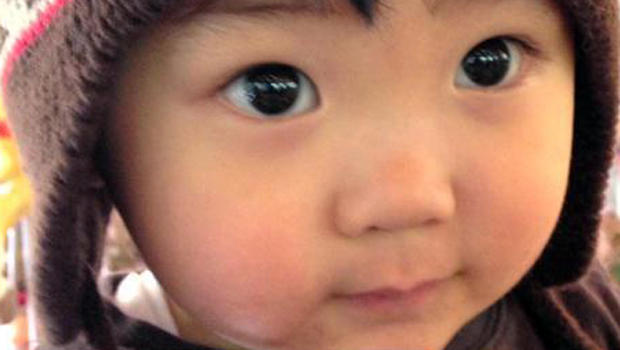Doctors make boy radioactive to treat rare cancer
SAN FRANCISCO -- A San Jose boy named Noah is at his home with his family after doctors turned him radioactive. It sounds like science fiction, but this special treatment may be the only thing saving his life, CBS San Francisco station KPIX-TV reports.
This is taking place at only one hospital in the state: University of California-San Francisco's Benioff Children's Hospital.
"I hope that he kicks cancer in the butt," said Cathy Shin, Noah's mother.
Noah just turned 3, and the adorable boy has charmed everyone on staff.
Last year, the toddler was diagnosed with neuroblastoma, a rare cancer of the developing nerve cells. While it's rare in the general population, it's the most common cancer in children younger than 1 year of age.
Half the cases are metastatic, which means it spreads to the entire body. That's what happened with Noah. UCSF pediatric oncologist Dr. Clay Gustafson showed KPIX-TV Noah's scans, and the black splotches told the story of a widely spread cancer.
Chemotherapy wasn't enough, so his parents came to UCSF to try a daring therapy.
"I hope that we can get his disease under control with this therapy, that we can shrink his tumors." Gustafson said.
If they can shrink his tumors, they may attempt a bone marrow transplant, and that holds the promise of curing the little boy.
Noah's primary doctors are at Lucile Packard Children's Hospital at Stanford, and they are in constant contact with the UCSF team.
The therapy is called MIGB and given on one day over the course of two hours by IV. MIGB therapy was pioneered at UCSF.
What makes it unique? Only cancerous nerve cells can absorb it, and in the drug doctors have attached a high powered weapon: a radioactive isotope called iodine-131.
"It's a way of delivering high-energy radiation to tumors, not just in one place but to tumors everywhere in the entire body," Gustafson said.
However, the treatment also turns Noah radioactive.
He must be kept isolated in a lead-shielded room for days to protect his family and the hospital staff.
A big lead plate is placed in front of his crib.
To keep a 3-year-old calm is no small feat.
"They're like little human tornados," Noah's mom said.
UCSF has pioneered an approach to deliver the therapy to young children. They use sedation.
"We need to be able to give him just enough sedation to take the edge off, but not so much that they fall into a deep sleep," said Dr. Arup Roy-Burman, medical director for the UCSF Pediatric ICU.
"It's helping him relax, and then it helps me relax because now I know he's not a danger to anybody," Cathy Shin said.
Everyone who enters the room has to wear a radiation detector and disposable clothing. Upon exit, they wave a Geiger counter over their body. They need to limit their exposure to Noah, and this is one way to gauge how much radiation each visitor is receiving.
Thanks to cameras around the room, Noah's family and the hospital staff can keep a trained eye on him and his vital signs.
His mom can't wait to get him home.
"I want him to grow up to be a healthy, happy, normal boy and put this all behind him; that's my hope," Cathy Shin said.
Children like Noah have about a 50 percent overall chance of survival.
As of Wednesday, Noah will be radioactive for a couple of more weeks, but the radiation levels diminish every day. It is safe, though, to hug and hold him.